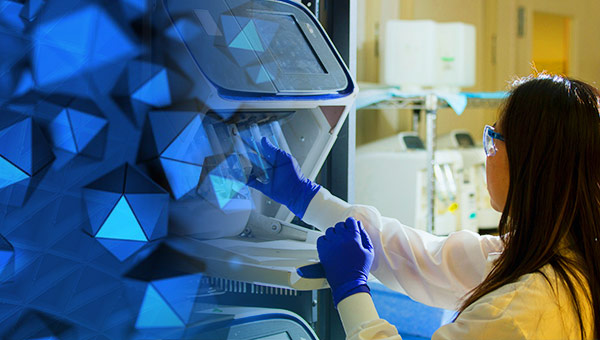Nam K. Tran, Ph.D., M.S., F.A.C.B., Director of Clinical Chemistry and POCT
Kristin Grimsrud, D.V.M., Ph.D., Assistant Professor, Dept. of Pathology and Laboratory Medicine
Jeffrey Gregg, M.D., Senior Director of Clinical Pathology and Director of Molecular Diagnostics
Jennifer Jeffries, C.L.S., Send Outs Supervisor
Introduction
Cytochrome P450s (CYP) are a superfamily of heme containing enzymes that play a role in drug metabolism, hormone synthesis/breakdown, and other metabolic pathways.1 The role of CYP in drug metabolism has gained renewed interest for precision medicine and pharmacogenetic testing to provide means to tailor drug therapy. Different medications can be metabolized by various subfamilies of CYP to facilitate bioactivation and alter pharmacokinetic properties. For example CYP3A4 is responsible for metabolizing over 60% of prescribe medications, while CYP2D6 is known to have variants that may present as rapid or slow metabolizers. Patients that have “fast” phenotypes can rapidly metabolize medications and result in sub-therapeutic drug levels. Alternately, slow metabolizers may increase drug half-life and lead to toxicity. Early studies involving the breast cancer drug, tamoxifen, suggested patients with CYP2D6 slow metabolizer genotype may be at risk for treatment failures.2 Since then, the role of CYPs for other medications, including opioids has gained interest—renewing demand for CYP genetic screening programs.3
Lab Best Practice
As the field of precision medicine and pharmacogenetics grows, we see an increased use of CYP testing. However, unregulated CYP screening of patients is currently not recommended. First, the majority CYP genetic analyses are performed at referral laboratories—making these tests both expensive and requiring extended turnaround times (i.e., 2-5 days). Next, Centers for Medicare and Medicaid Services (CMS) may not reimburse for CYP testing (e.g., CYP2C9 for warfarin therapy)4, therefore, the list of referral laboratories performing CYP screening remains limited. Also, despite early evidence of CYP2D6 polymorphisms impacting tamoxifen therapy, later studies suggest CYP2D6 genetic variants are only part of the picture and the role CYP testing remains controversial. 5-7 Lastly, not all CYP assays are created the same. The majority of CYP analyses are considered “Laboratory Developed Tests”, which have been known to differ between facilities. In other words, not all tests are created equal.
At UC Davis Medical Center (UCDMC), there is a growing demand for CYP testing. Cases of CYP genetic testing typically involve patients refractive to pharmacotherapy. However, many of these requests are not backed by objective laboratory data to suggest the presence of CYP variants. In one case, CYP testing was requested for a suspected slow metabolizer, however upon drug level analysis by the laboratory, it was found the patient had no drug levels at all. Obviously, it is not possible to be a slow metabolizer or to determine CYP phenotype if the patient has no detectable drug levels. A more common scenario is a request for the “CYP panel” that looks at multiple enzymes and their variants since a patient is reportedly refractive to one medication. Not all CYPs play a role for a single drug, and some drugs are metabolized by more than one CYP subfamily versus another. To this end, the UCDMC Clinical Laboratory will only approve CYP testing if at least one of the following conditions are met:
- In addition to clinical presentation, objective laboratory data is available such as parent drug and/or metabolite level testing showing abnormal concentrations to suggest the presence of a CYP variant.
- There is a scientific basis for targeting a CYP or set of CYPs for a specific drug. Broad CYP genetic analysis requires prior approval and review by the laboratory test utilization staff.
Other considerations include patients with normal CYP genotypes presenting with abnormal drug levels. These abnormal drug levels may be caused by polypharmacy where drugs compete for common CYP pathways. Some medications and even foods can also act as CYP inducers and inhibitors. Lastly, CYPs are not the only enzymes that metabolize drugs. Glucuronidation, glutathione, and sulfation pathways are common and not routinely tested. Further studies are needed to determine the clinical value of CYP analysis and proper test utilization.
References
- Zanger UUM, Schwab M. Cytochrome P450 enzymes in drug metabolism: regulation of gene expression, enzyme activities, and impact of genetic variation. Pharm Ther 2013;138:103-141.
- Goetz MP, Kamal A, Ames MM. Tamoxifen pharmacogenomics: the role of CYP2D6 as a predictor of drug response. Clin Pharmacol Ther 2008;83:160-166.
- Medscape Article: https://www.medscape.com/viewarticle/771480, Accessed on December 12, 2017.
- Centers for Medicare and Medicaid Services (CMS) announcement: https://www.cms.gov/Outreach-and-Education/Medicare-Learning-NetworkMLN/MLN MattersArticles/downloads/MM6715.pdf, Accessed on December 12, 2017.
- Schroth W, Goetz MP, Hamann U, et al. Association between CYP2D6 polymorphisms and outcomes among women with early stage breast cancer treated with tamoxifen. JAMA. 2009;302:1429-36.
- Regan MM, Leyland-Jones B, Bouzyk M et al.; Breast International Group (BIG) 1-98 Collaborative Group. CYP2D6 genotype and tamoxifen response in postmenopausal women with endocrine-responsive breast cancer: the breast international group 1-98 trial. J Natl Cancer Inst. 2012;104:441-51.
- Rae JM, Drury S, Hayes DF, et al. CYP2D6 and UGT2B7 genotype and risk of recurrence in tamoxifen-treated breast cancer patients. J Natl Cancer Inst. 2012;104:452-60.



